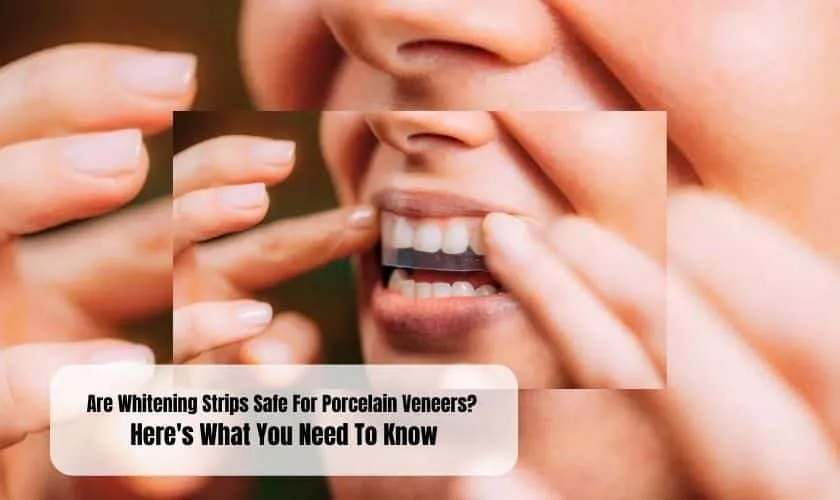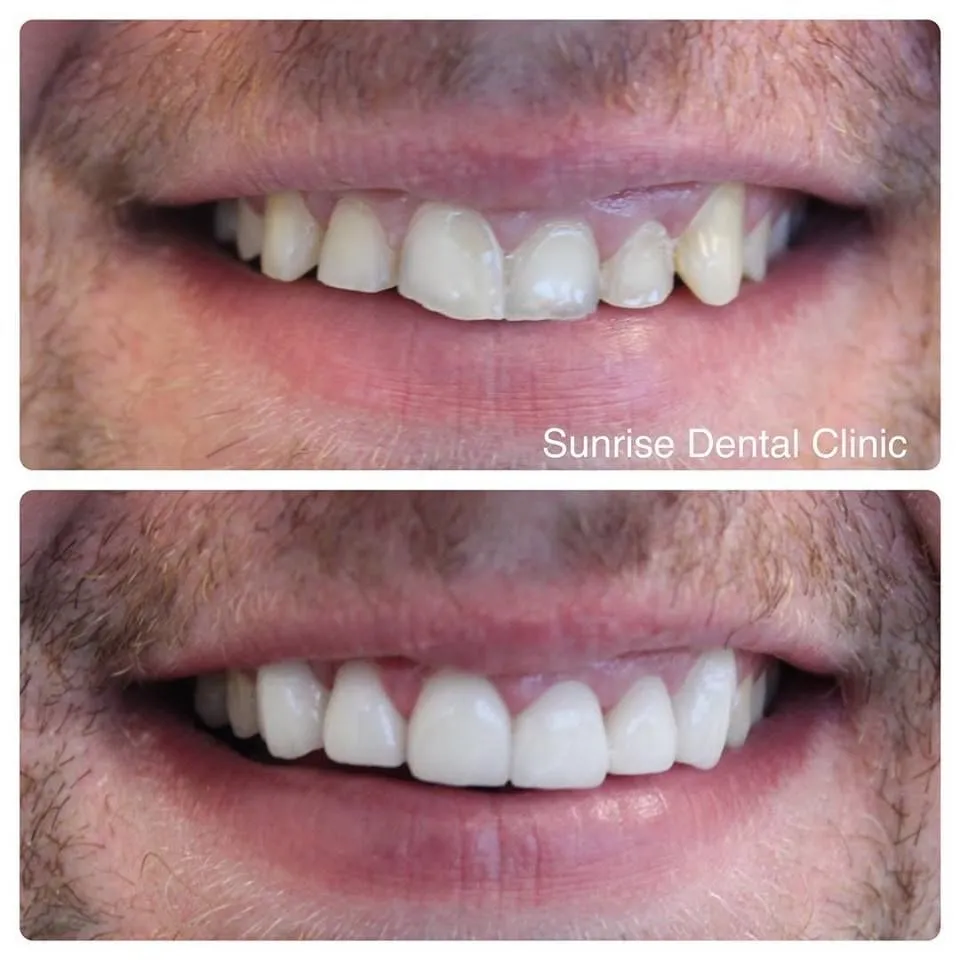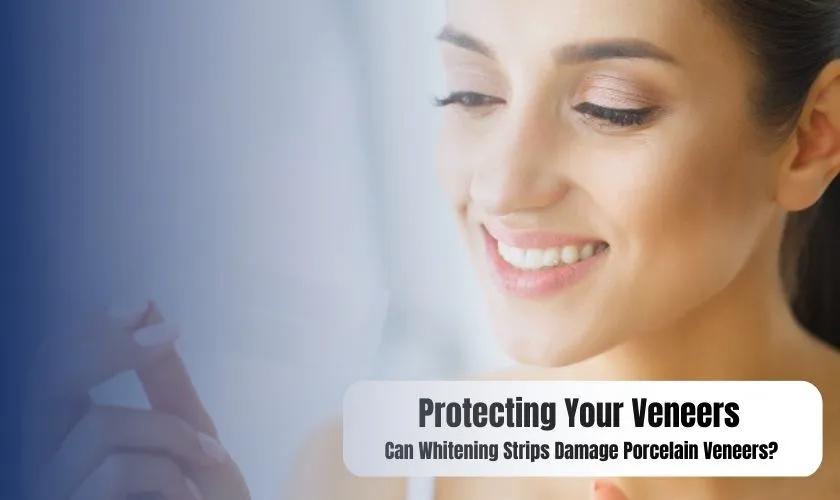Whitening Strips & Veneers Top 5 Facts
If you’re considering using whitening strips and you have veneers, it’s crucial to understand the potential implications. Veneers, unlike natural teeth, do not respond to the whitening agents found in these strips. This article will explore the top 5 facts you need to know. We’ll delve into what veneers are, how whitening strips work, and why they’re not a good match for veneers. Moreover, we’ll explore viable alternatives and important considerations to help you maintain a bright and healthy smile. Understanding these facts ensures that you make informed decisions and protect your investment in your smile. Let’s explore the common questions and provide insightful information about the intersection of veneers and whitening strips.
Understanding Veneers
What are Dental Veneers?

Dental veneers are thin, custom-made shells designed to cover the front surface of teeth. They are primarily used to improve the appearance of a person’s smile, addressing issues such as discoloration, chips, cracks, gaps, or minor misalignments. Veneers are an excellent cosmetic dentistry option, offering a natural-looking solution for enhancing the aesthetics of your teeth. The process involves a dentist taking an impression of your teeth, preparing them by removing a small amount of enamel, and then bonding the veneer to the tooth. The result is a beautifully restored smile that boosts confidence and overall dental health. Veneers can transform a smile, offering long-lasting aesthetic improvements.
Materials Used for Veneers
Veneers are commonly made from two primary materials: porcelain and composite resin. Porcelain veneers are renowned for their durability, stain resistance, and ability to mimic the natural translucence of teeth, making them a popular choice for a natural appearance. Composite resin veneers are more affordable and can often be applied in a single appointment, making them a quicker option. However, they may be less stain-resistant and durable than porcelain. The choice between porcelain and composite resin depends on individual needs, budget, and aesthetic goals. Your dentist can help you decide which material is best for your specific situation. The material choice influences the overall appearance, longevity, and cost of the veneers.
Why Veneers Don’t Whiten
A crucial fact to understand is that veneers do not whiten in response to whitening treatments. Whether porcelain or composite, the materials used to make veneers are designed to resist stains and discoloration. The whitening agents in strips, such as hydrogen peroxide or carbamide peroxide, work by penetrating the porous enamel of natural teeth and breaking down stain molecules. However, veneers are non-porous, which means the whitening agents cannot penetrate the surface and effectively alter the color. If you’re looking to brighten your smile and have veneers, it’s essential to consider alternatives that can address this limitation. Whitening strips will simply not have any effect on the color of your veneers.
The Issue with Whitening Strips

How Whitening Strips Work
Whitening strips typically contain a concentration of hydrogen peroxide or carbamide peroxide. These chemicals are designed to oxidize the stain molecules within the enamel of natural teeth, breaking them down and making the teeth appear whiter. The strips are applied directly to the teeth, allowing the whitening agent to come into contact with the tooth surface. The effectiveness of these strips varies based on the concentration of the whitening agent, the duration of application, and the type of stains present. While whitening strips can be effective for natural teeth, they do not work on veneers. The key is the enamel penetration, which doesn’t happen with veneers.
Whitening Strips on Veneers — The Problem
The primary problem with using whitening strips on veneers is that they won’t change the color of the veneers. The whitening agents will not penetrate the veneer surface. The result will be uneven coloration, where your natural teeth may appear whiter while your veneers remain the same shade. This contrast can highlight the difference between your natural teeth and veneers. Moreover, the whitening agents can potentially weaken the bond between the veneer and your natural tooth, leading to possible damage. This mismatch can be visually unappealing, leading to a less-than-ideal smile. Proper care and consultation with your dentist will protect your investment in a beautiful smile.
Potential Damage and Risks

Beyond the ineffectiveness, using whitening strips on veneers can potentially lead to several risks. The whitening agents can cause sensitivity in the surrounding gum tissue, leading to irritation and inflammation. Repeated exposure to the chemicals can weaken the adhesive that bonds the veneer to your natural tooth, which can compromise the veneer’s integrity and increase the risk of detachment. In extreme cases, harsh chemicals can damage the veneer surface, leading to a dull appearance or requiring replacement. It’s essential to protect your veneers from unnecessary damage by consulting with your dentist and choosing safe and appropriate methods. The long-term health and appearance of your smile depend on careful decision-making.
Alternatives to Whitening Strips
Professional Teeth Whitening
If you have veneers and want to brighten your smile, professional teeth whitening is often the best option. This involves a dentist applying a high-concentration bleaching agent to your natural teeth. The dentist will take steps to protect your veneers, ensuring that the whitening agent only affects your natural teeth. This approach can create a more uniform shade across your smile. Professional whitening is a safer and more effective option when you have veneers. Your dentist can assess your specific needs and provide a customized whitening plan to achieve the best results. This ensures your smile’s overall aesthetic is consistent.
Maintaining Your Veneers

Maintaining your veneers involves a combination of good oral hygiene practices and regular dental check-ups. Brush your teeth twice daily with a non-abrasive toothpaste to remove plaque and debris. Floss daily to clean between your teeth and under the gum line. Avoid habits like biting your nails or chewing on hard objects, as these can chip or damage veneers. Regular visits to the dentist for cleanings and check-ups are essential to monitor the condition of your veneers and address any potential issues early on. By following these guidelines, you can extend the lifespan and maintain the appearance of your veneers for many years. Consistent maintenance is key to enjoying your smile for a long time.
Other Considerations
Consulting with Your Dentist
Before starting any teeth-whitening treatment or using any products on or around your veneers, it’s vital to consult with your dentist. They can evaluate the condition of your veneers, discuss your goals, and recommend the most appropriate whitening options for your specific situation. Your dentist can also provide guidance on maintaining your veneers and offer insights into potential risks and benefits. Consulting with a dental professional is the best way to ensure that you protect your investment in your smile while achieving the desired results. It is essential to get professional advice tailored to your needs.
Cost and Lifespan of Veneers

The cost of veneers can vary depending on the material, the number of veneers needed, and the location of the dental practice. Porcelain veneers typically cost more than composite resin veneers due to their durability and aesthetic qualities. The lifespan of veneers can range from 10 to 20 years, depending on the material, your oral hygiene habits, and regular dental care. Proper care, including avoiding abrasive products, regular check-ups, and addressing any issues promptly, will help to extend the lifespan of your veneers. It’s important to consider the long-term investment and factor in potential maintenance and replacement costs when making decisions.
